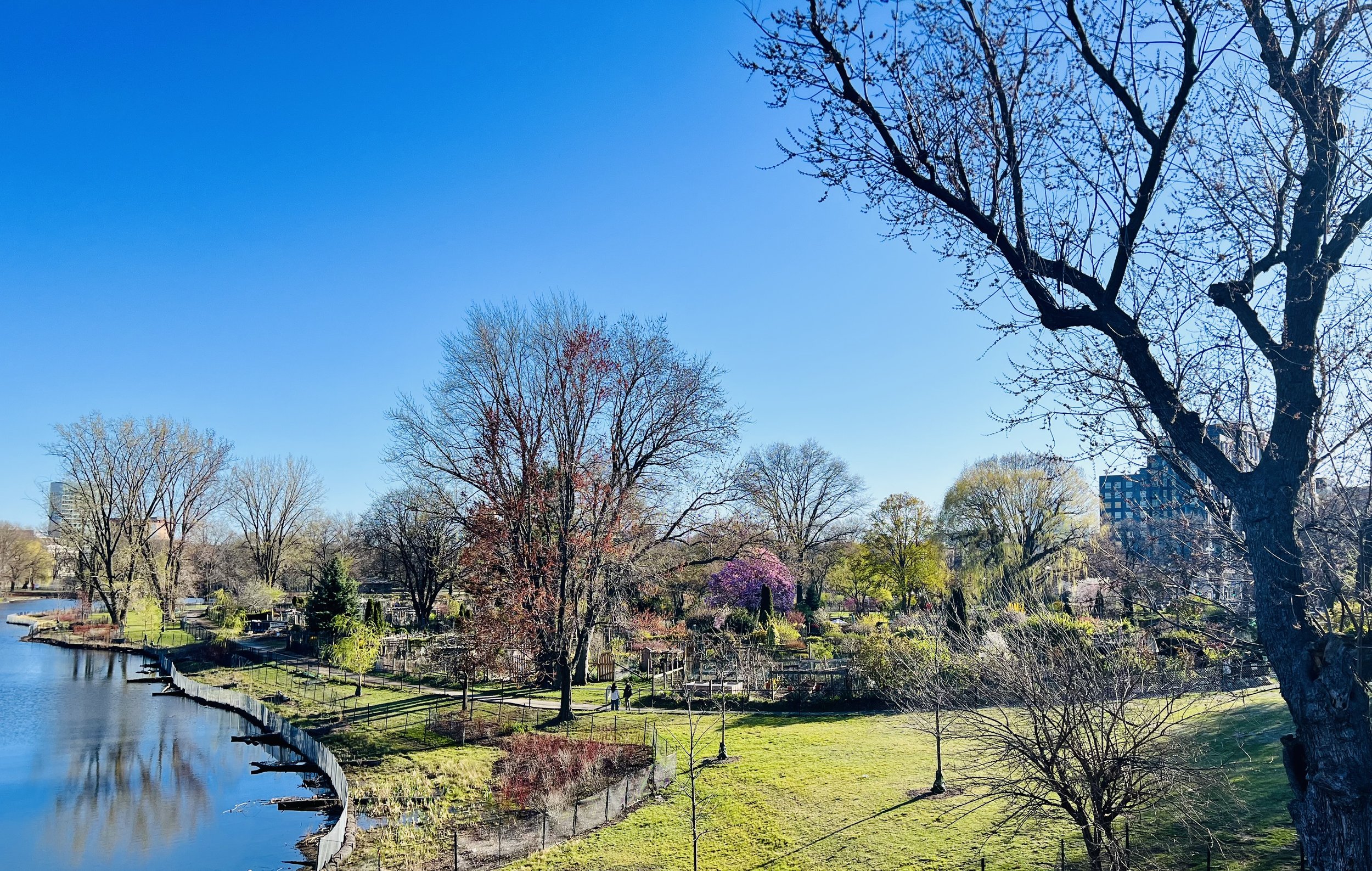Est. 1942
History of the Fenway Victory Gardens
A Living Legacy of Resilience and Community
The Fenway Victory Gardens are the only remaining continuously-operating World War II Victory Gardens in the United States.
Established in 1942, these gardens were part of a nationwide movement encouraged by the Roosevelt Administration to promote self-sufficiency during wartime. Over 20 million Victory Gardens sprang up across the country, providing nearly 40% of the fresh produce consumed in the U.S. during the war.
The City of Boston, recognizing the importance of community gardening, formed the Boston Victory Garden Committee, identifying 49 parcels of land for cultivation, including what is now the Fenway Victory Gardens. These gardens have remained in continuous operation ever since, evolving into a vibrant, community-driven green space in the heart of Boston.
Victory Gardens: A Nationwide Movement
During World War II, the U.S. government encouraged citizens to grow their own food as part of the war effort. With commercial farms prioritizing military supply lines and rationing in place, Americans responded by planting gardens in backyards, vacant lots, and even on the White House lawn.
Photo 1: Victory Garden in front of Trinity Church in Copley Square, Boston. Photo courtesy of Boston Public Library, Leslie Jones Collection. Photo 2: An ad from the Pawtucket Daily Times
U.S. government posters promoting victory gardens.
Boston played a significant role in this effort, with public parks and schoolyards transformed into community gardens. Among the city's most notable sites was a Victory Garden in Copley Square, right in front of Trinity Church. Boston's parks department and public schoolteachers took the lead in supervising and maintaining these gardens.
Victory Gardeners were encouraged to plant tomatoes, carrots, lettuce, beets, peas, and, for the first time, crops like Swiss chard and kohlrabi, valued for their ease of growth. However, turning urban plots into productive land was no small feat—especially in the Fenway area, built on landfill. Early gardeners struggled to remove debris such as bricks, old boilers, and construction rubble to make way for fertile soil.
The Fight to Preserve the Gardens
As World War II came to an end, many Victory Gardens were dismantled, their land repurposed for development. In Boston, Fenway’s gardeners feared their beloved space would be lost. In 1944, a group of dedicated gardeners, led by Richard D. Parker, formed what would become the Fenway Garden Society, Inc., advocating to keep the gardens intact.
For decades, Parker and his fellow gardeners fought off numerous development threats, including proposals to turn the gardens into a school, hospital, or parking lot. Thanks to their unwavering commitment, the Fenway Victory Gardens remain a 7.5-acre oasis within Frederick Law Olmsted’s Emerald Necklace, now home to more than 500 garden plots.
In 1975, following Parker’s passing, the gardens were renamed in his honor as the Richard D. Parker Memorial Victory Gardens. To this day, Fenway gardeners uphold a cherished tradition: cheering at the plucking of the season’s first tomato — a joyful nod to the community’s resilience.
The Fenway Victory Gardens Today
While these gardens were originally cultivated to support the war effort, they have since grown into something much more — a community-driven haven for urban gardening, education, and environmental stewardship. Today, the Fenway Garden Society offers:
Educational workshops on sustainable gardening
Volunteer opportunities to engage with the community
Special garden spaces, including the Teaching Garden, Bee Apiary & Pollinator Garden, Accessible Garden, and Medicinal Herb Garden
Visitors are welcome to explore this historic urban green space, take in its diverse landscapes, and enjoy a moment of nature in the city.
Land and Water Acknowledgement
Long before Frederick Law Olmsted envisioned and created the Emerald Necklace as a response to the pressures of a growing, industrializing Boston, the lands and waterways of what we now call Greater Boston were vital places of gathering, exchange, and stewardship for Indigenous communities, including the Massachusett, Pawtucket, Wampanoag, and Nipmuc peoples. Their presence continues today.
The Fenway Garden Society, Inc. recognizes these unceded ancestral homelands and affirms our commitment to acknowledging and learning from the Indigenous peoples whose deep connections to this land long predate our own. This statement is offered as an opening step toward building respectful relationships grounded in Indigenous perspectives on land, belonging, and care.
The Fenway Victory Gardens, which we are honored to help steward, are located within a civic landscape shaped by ongoing partnerships. We encourage exploring the acknowledgements and resources offered by our public collaborators:
From the City of Boston, see here
From the Commonwealth of Massachusetts, see resources and services provided by the Commission on Indian Affairs
Why does this acknowledgement matter?
At its core, this recognition is about honoring our Massachusett, Wampanoag, and Nipmuc neighbors—past, present, and future. Their histories and traditions offer profound insights into what shared stewardship can and should mean. By understanding and respecting these legacies, we can better shape the ways we care for public land and water—deepening our collective commitment to health, connection, and ecological balance.
Want to learn more?
We invite you to explore this story of a decades-long effort that highlights Indigenous connections to the land now known as the Back Bay—home today to the Fenway Victory Gardens.








